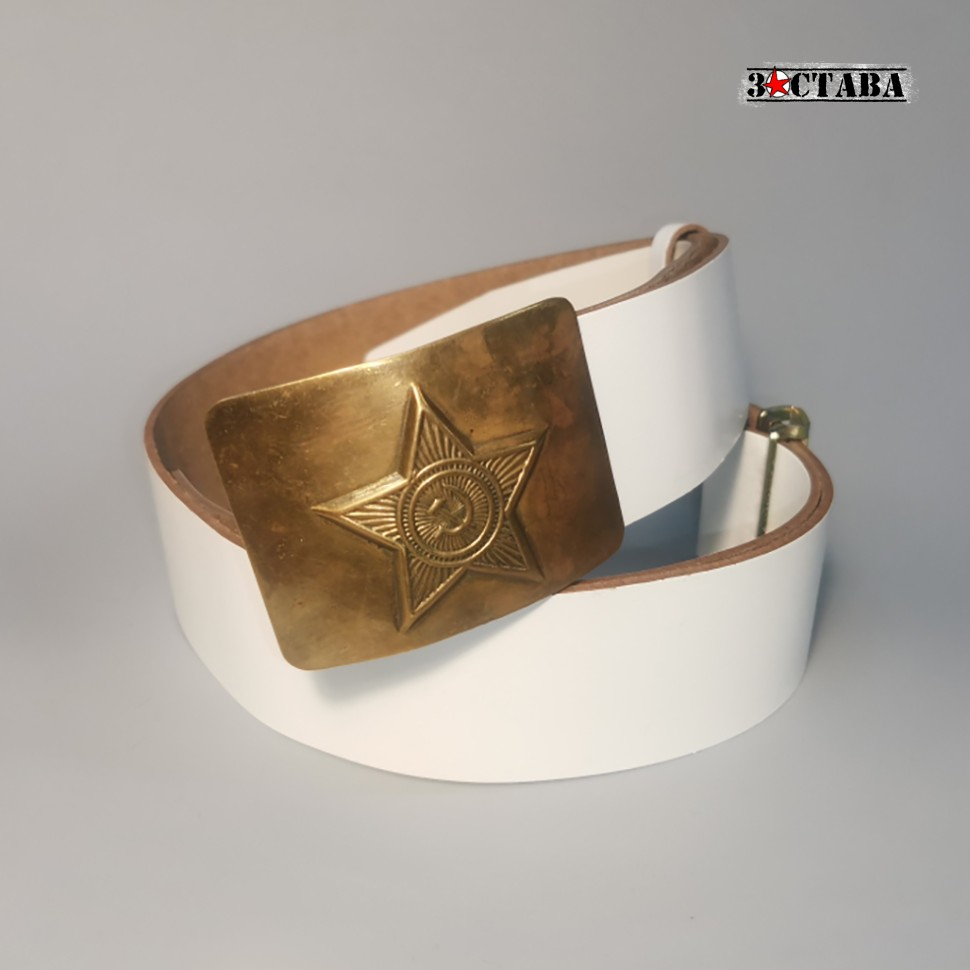How to choose a correct Soviet Army belt for reenactment
- Vlad Besedovskyy
- Jan 19, 2024
- 4 min read
A soldier cannot exist without the belt and in the Soviet Army it was just as important. Ever since the creation of the Red Army after the 1917 revolution, soldiers and officers utilized belts of various types. In this article we will only cover the post-war belts, as this is our main focus in this blog.
General rule
While all the belts had different purpose and appearance, in practice they could have been multipurpose. It was rare for a soldier in the Soviet Army to have more than one belt at a time. Since we are not soldiers, but reenactors and collectors, we can afford to have different ones. So it is essential to know when they were supposed to be issued.
Soviet Army Belt buckles
There are three types of Soviet issued belt buckles that existed for enlisted men during the period of Cold War:
Shiny golden buckle
Subdued olive buckle
Matte silver-grey buckle
Rule of thumb - do not use anything apart from the shiny buckle. Others were not intended to be used during regular times and they weren't used in Afghanistan. If you want to know more, please check the article on belt buckles.
Soviet leather belt
The most common type of belt that was introduced couple years after the end of the Second World War. This was a genuine, good quality leather. These belts were issued until the end of 1970s, when they were started to be substituted with cheaper options. At this point, they became a praised piece of equipment - every soldier wanted to have it. Fresh conscripts were not allowed to have these - they would be confiscated by the older generation of soldiers.
Overall, they were mostly used up within the forces by the end of the Soviet era. While not being practical - they are not very comfortable to put pouches on them, they were still used in the field more often than not. As of now, they are a valuable piece of equipment, as they are the perfect option for 1950-1960s reenactment and generally a very good one for the later years.
Soviet field belt
This is type of belts which were adapted instead of the leather one. Being incredibly hard and sturdy they were a perfect option to use together with pouches. This belt does not bend and generally keeps its form when worn for long time and with heavy equipment on it.
During the war in Afghanistan this was a preferred option for the situations when more than just a flask of water was needed on the belt. Then again, most units which would actually participate in dismounted operations were equipped with some sort of chest-rigs, so the belt was, once again, serving mainly decorative purpose. It was very uncommon to wear a magazine pouches together with the chest-rig. Grenade pouches were almost never worn at all.
Fake leather belt
This is, probably, the worst belt in terms of quality. Made from thin, unpleasant linoleum type of material, it had similar softness to the leather belt, but did not have same appearance. It is unclear who was was supposed to wear these belts, as there are no protos where it is clearly visible.
As of now, they are one of the more available options, just because they were produced and rarely used. Generally it is advised to abstain from using them, though it can be a good starting point.
Covered canvas belt
One of the most common belts today. They were made in huge numbers to be used during the big war, which has only began in 2022 and this is when they were issued on large scale. Designed for the actual wartime, they were supplied with the subdued belt buckles. Realistically, these are the best soviet belts for the field - they are robust, subdued soft enough to be comfortable and hard enough to carry pouches. However, they were almost never used neither in the Army nor in Afghanistan. In terms of reenactment and collecting they only work for a hypothetical WW3 scenario display.
Canvas belt
This belt is very similar to the cover canvas belt, but, as the name probably suggests, it was not covered with raisin and therefore has very different appearance. Always supplied with matte gray buckle, it was designed as the wartime belt in the 1950s. Later on, when the wartime belts changed appearance, the canvas ones with grey metal buckle were issued to the construction units and sometimes for heavy work in regular units. Still very common nowadays, they do not fit any type of regular reenactment activities.
White parade belt
The least common among the reenactors, the white parade belt was designed and used for what the name suggests. Made from a fake leather, it was issued with the parade uniform for guarding the Unit Banner, for the military parades and any other official events of similar importance.
Interestingly, they were also used in the field and even in Afghanistan. Those Military Police type of units, which conducted traffic control, used white elements of equipment to make themselves visible for the incoming vehicles. While in most cases soldiers used Sam Brown's type of belts for this job, sometimes they would substitute it with the white soldier belt.







Comentarios